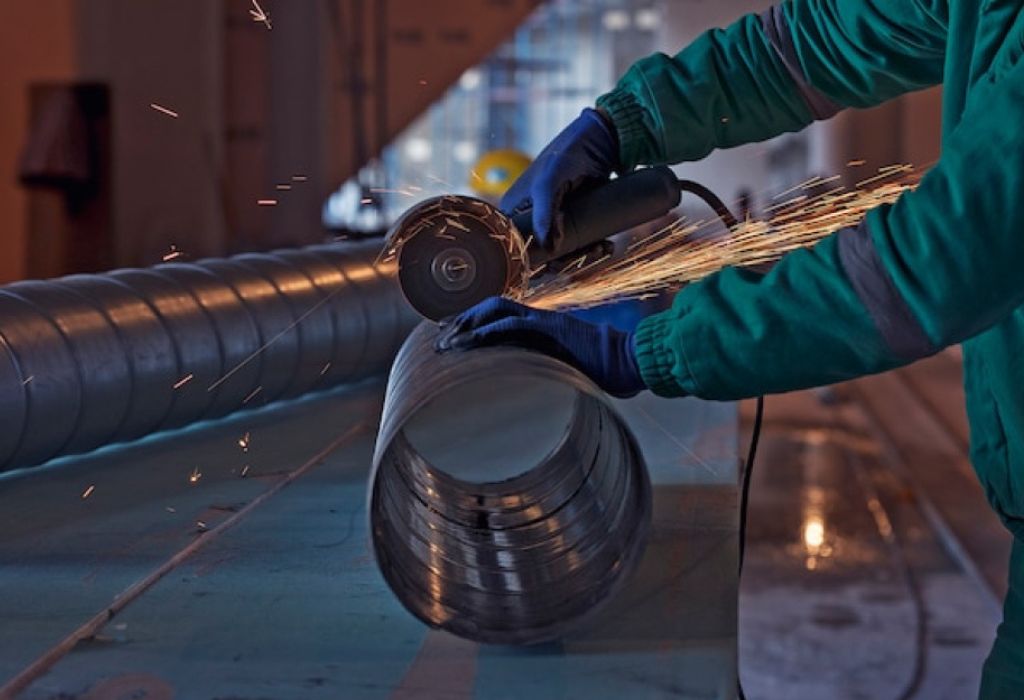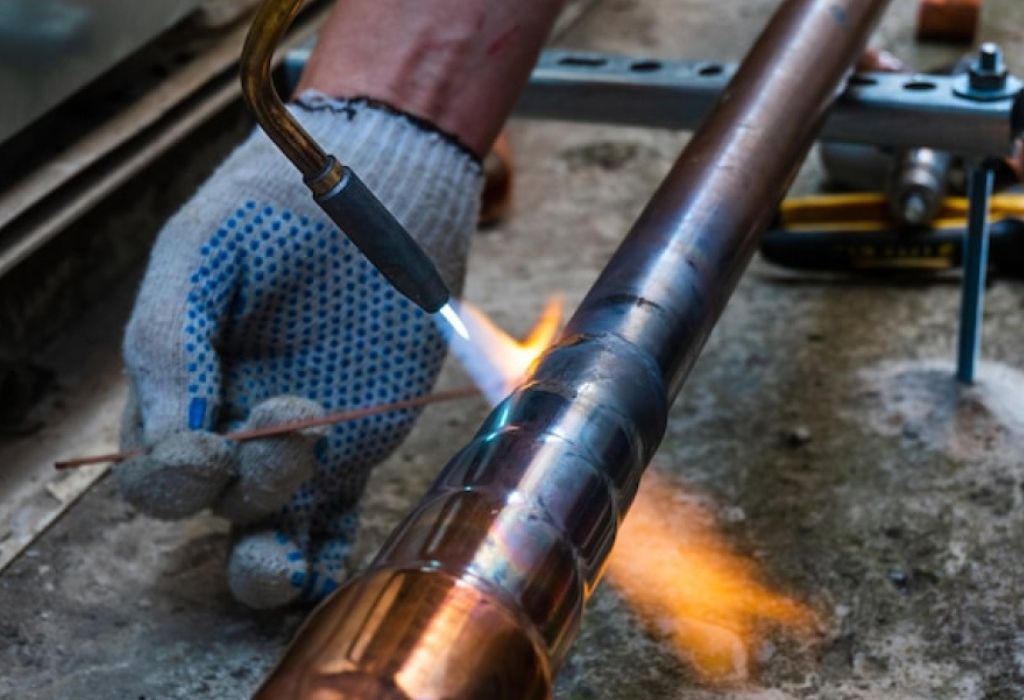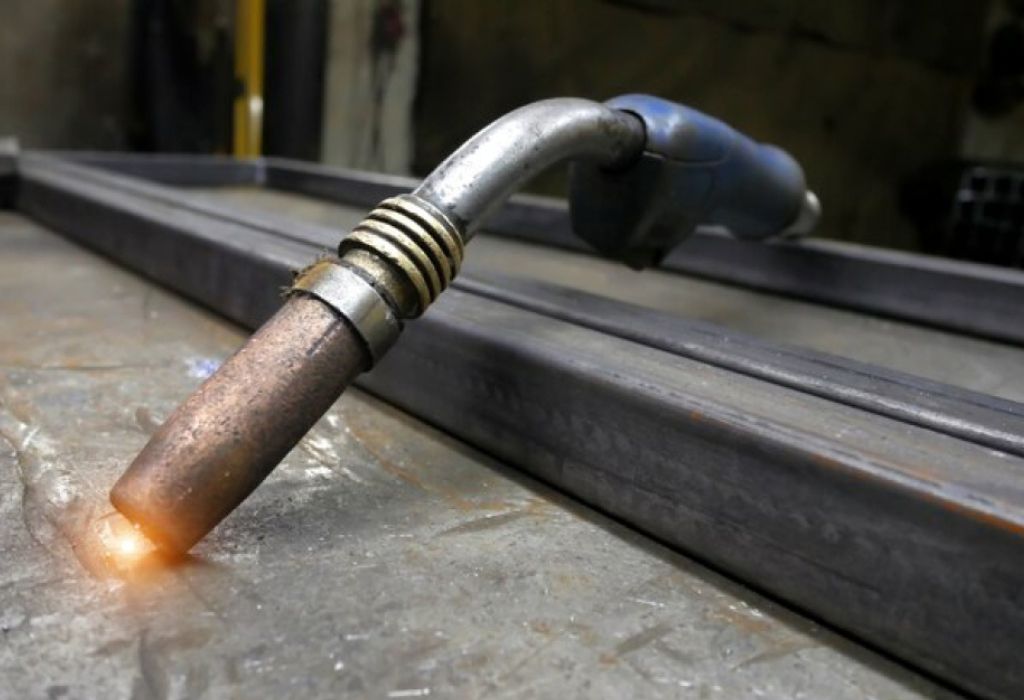Many homeowners and welders have faced this question during plumbing or gas line repairs — can you weld black iron pipe safely?
The dark, matte finish looks sturdy, but it hides more complexity than you might expect.
One wrong move can compromise structural integrity, release harmful fumes, or violate building codes. In fact, the U.S. Fire Administration notes that over 50,000 residential fires annually stem from faulty gas line work .
Understanding when and how to weld black iron pipe can prevent costly mistakes and ensure safety compliance.
This guide breaks down the truth about black iron pipe, welding methods, safety standards, and practical alternatives so you can make informed decisions before striking an arc.
What Is Black Iron Pipe?

Black iron pipe isn’t actually made of pure iron. It’s a form of low-carbon steel coated with a black oxide finish formed during the manufacturing process. This coating provides mild corrosion resistance and a signature dark appearance.
The term “black iron” is mainly a trade label used for pipes that are ASTM A53 or A106 carbon steel, commonly seen in gas, steam, and hydronic systems.
Is black iron truly iron?
No, it’s steel with a black mill-scale coating, not pure iron.
How is it different from galvanized pipe?
Galvanized pipe has a zinc layer to resist rust; black pipe relies on oxide coating instead.
Does the coating affect welding?
Yes, mill scale should be ground off the weld area for better penetration.
Are black iron and black steel the same?
Essentially yes, though “black steel” often refers to industrial-grade pipe with stricter standards.
What schedules are available?
Most residential lines use Schedule 40; high-pressure systems may require Schedule 80.
Can You Weld Black Iron Pipe?
Yes — you can weld black iron pipe because it’s mild steel. But the bigger question is whether you should weld it. For pressurized gas or plumbing systems, local codes often restrict or forbid welded joints in favor of threaded fittings.
In non-pressurized or structural applications, welding black iron pipe is both practical and efficient when performed correctly.
Is welding black pipe allowed for gas lines?
In many areas, it’s restricted by code; check with local authorities or inspectors.
Is black pipe safe to weld for furniture or handrails?
Yes, if cleaned properly and not exposed to pressure.
Why do some welders avoid it?
Mill scale and internal coatings can cause porosity or fumes if not removed.
Can you weld it without special equipment?
Yes, standard MIG, TIG, or stick welders work fine with the right settings.
Does welding make it stronger than threading?
A good weld can be just as strong, but compliance and testing are what matter most.
Safety Precautions Before Welding
Welding black iron pipe involves heat, sparks, and potential toxic fumes. Always work in a well-ventilated area, wear safety gear, and follow hot-work safety standards.
Never weld a pipe that has contained flammable gas without verified purging and isolation. Improper prep can cause explosions or severe injury.
Is it safe to weld used gas pipe?
Only after complete purging, cleaning, and pressure testing by professionals.
Do I need to remove the pipe coating before welding?
Yes, grind or sand the area clean to prevent contamination.
What PPE is required?
Welding helmet, gloves, long sleeves, respirator, and safety boots.
Should I have a fire extinguisher nearby?
Always keep one within arm’s reach during hot work.
Can welding black pipe release toxic fumes?
Yes — burning mill scale and oils can emit harmful gases, so ensure proper ventilation.
Preparation: Cleaning and Fit-Up
Preparation makes or breaks weld quality. Black iron pipe arrives coated with oil and mill scale that must be cleaned before welding.
Use a wire wheel or grinder to remove the coating at least an inch beyond the weld zone. Wipe the surface with acetone or degreaser to eliminate residue.
How far should I grind back?
At least 25–40 mm around the joint area.
Can I weld over paint or oil?
No, both create porosity and weak welds.
Do I need to bevel black iron pipe?
Yes, a 37.5° bevel is recommended for butt joints to ensure penetration.
Is preheating necessary?
For Schedule 80 or thicker pipe, preheat to around 120°C to reduce cracking risk.
How should I align the joints?
Use pipe clamps or alignment tools for a consistent root gap.
Best Welding Processes for Black Iron Pipe
Choosing the right welding process depends on your skill, budget, and environment. The most common are SMAW (Stick), MIG (GMAW), and TIG (GTAW).
SMAW (Stick Welding)
Stick welding is ideal for fieldwork and dirty conditions. Use E6010 for the root pass and E7018 for filler passes.
Maintain a steady arc and drag motion for consistent bead formation.
MIG (GMAW)
MIG provides clean, fast welds in shop environments. Use ER70S-6 wire with 75/25 argon-CO₂ gas.
Ensure good gas flow and keep your work clean for minimal spatter.
TIG (GTAW)
TIG delivers the most precise welds for thin-wall or visible joints. Use ER70S-2 filler and pure argon shielding.
It’s slower but produces a flawless appearance and deeper control.
Which process is easiest for beginners?
MIG is easiest to control and produces neat welds quickly.
Can I use flux-core wire?
Yes, but ensure it’s rated for carbon steel and adjust settings for deeper penetration.
Is stick welding okay for small pipe?
Yes, but requires more skill to control heat and spatter.
Does TIG give the strongest weld?
Strength is similar, but TIG offers superior precision and aesthetic quality.
Which process is most cost-effective?
Stick welding for outdoors; MIG for shop productivity.
Joint Types and Welding Parameters

Black iron pipe can be joined using butt, fillet, or socket welds. Each requires attention to heat input, travel speed, and positioning.
Fillet welds are common for structural frames, while butt welds are used for pressure-rated or large-diameter connections.
What joint angle is standard for bevels?
37.5° total with a 1/16-inch root gap.
How hot should I run the weld?
For Stick E7018, around 120–150 amps for 3/32” electrodes.
Do I weave or run straight beads?
Use stringer beads for small diameters; weave slightly for wide gaps.
Can I weld in any position?
Yes, with practice — 1G (flat) to 6G (fixed) positions cover all possibilities.
Does heat affect the coating beyond the weld area?
Yes, so repaint or oil the pipe after cooling to prevent rust.
Common Welding Defects and Fixes
Even skilled welders encounter issues like porosity or undercutting. Understanding causes helps prevent weak welds.
Use clean base metal, proper voltage, and consistent travel speed to minimize defects.
Why am I seeing porosity in my weld?
It’s caused by contamination, oil, or trapped gases under mill scale.
What causes undercutting?
Too high voltage or excessive travel speed can gouge edges.
How do I fix lack of fusion?
Increase amperage slightly or improve cleaning.
Can spatter ruin the finish?
Not structurally, but it looks unprofessional — use anti-spatter spray.
What’s the best way to inspect my welds?
Perform visual checks, then a pressure or soap test for leaks.
Gas, Steam, and Hydronic Systems: Special Considerations
Black iron pipe is widely used for gas and steam, but welding it for these systems requires code compliance. Local building codes or NFPA 54 (Fuel Gas Code) often dictate joint type.
If you’re unsure, always consult a licensed gas fitter before modifying existing systems.
Is welding gas line pipe legal?
Only if permitted by local codes and inspected after installation.
Why are threaded joints preferred?
They’re easier to inspect, seal, and replace without cutting.
Can welded joints handle higher pressure?
Yes, but only with certified procedures and qualified welders.
What certification do professionals need?
ASME or AWS certification for pressure piping.
Should I test the line after welding?
Always — use hydrostatic or pneumatic testing before service.
Post-Weld Inspection and Finishing
After cooling, visually inspect for cracks, incomplete fusion, or slag inclusions. Pressure testing verifies strength and leak integrity.
Apply primer or paint to the welded area to prevent corrosion where the coating was removed.
How soon can I test the weld?
Once it’s cooled to room temperature and passes a visual check.
What pressure test should I perform?
A soap bubble test for leaks or hydrostatic testing for code compliance.
Can I use the pipe without repainting?
No, bare steel will rust quickly once exposed to air.
What paint should I use?
Use a high-temperature, rust-inhibiting primer and enamel topcoat.
Do I need to grind the weld smooth?
Only if required for aesthetics or tight fitting installations.
When Not to Weld Black Iron Pipe
Some applications simply aren’t worth the risk. For small gas lines or plumbing, threading or using mechanical couplings is faster, safer, and code-approved.
Welding may also be impractical in tight spaces where ventilation or safety clearances are limited.
Is welding safe near valves or regulators?
No, heat can damage internal seals — remove or isolate components first.
Can I weld pipes already installed in walls?
Never; the confined space and fire risk make it unsafe.
Should I weld galvanized pipe instead?
No, zinc fumes are extremely toxic.
When is brazing better than welding?
For joining dissimilar metals like copper-to-steel transitions.
Are mechanical couplings reliable?
Yes, they’re widely used in commercial plumbing for fast, code-approved installations.
Cost and Efficiency Comparison

Welding black iron pipe can reduce the number of fittings and joints but increases setup time and inspection costs. Threading is faster for short runs and small projects.
For large industrial systems, welding can save material costs and provide smoother internal flow.
Is welding cheaper than threading?
Not for small jobs; equipment, prep, and inspection add expense.
Does welding reduce leak points?
Yes, continuous joints eliminate threaded gaps.
What about labor time?
Welding takes longer but offers permanent strength.
Are consumables expensive?
Mild steel rods and wire are affordable and widely available.
Which is better for long-term durability?
Properly welded joints last longer under vibration and high temperature.
Conclusion
So, can you weld black iron pipe? Yes, but only when it’s appropriate for the job and safe under code. The material is mild steel, making it weldable with MIG, TIG, or Stick methods.
However, gas or pressurized systems often prohibit welded joints without certification. Always clean the surface, choose the right process, and test thoroughly before use.
By combining proper preparation, technique, and inspection, you can weld black iron pipe safely and effectively — ensuring strength, compliance, and lasting performance.

I’m Darrell Julian, the founder, lead writer, and hands-on welding enthusiast behind ArcWeldingPro.com. With more than 15 years of real-world welding experience, I created this platform to share what I’ve learned in the field, in the shop, and in the heat of the arc.


